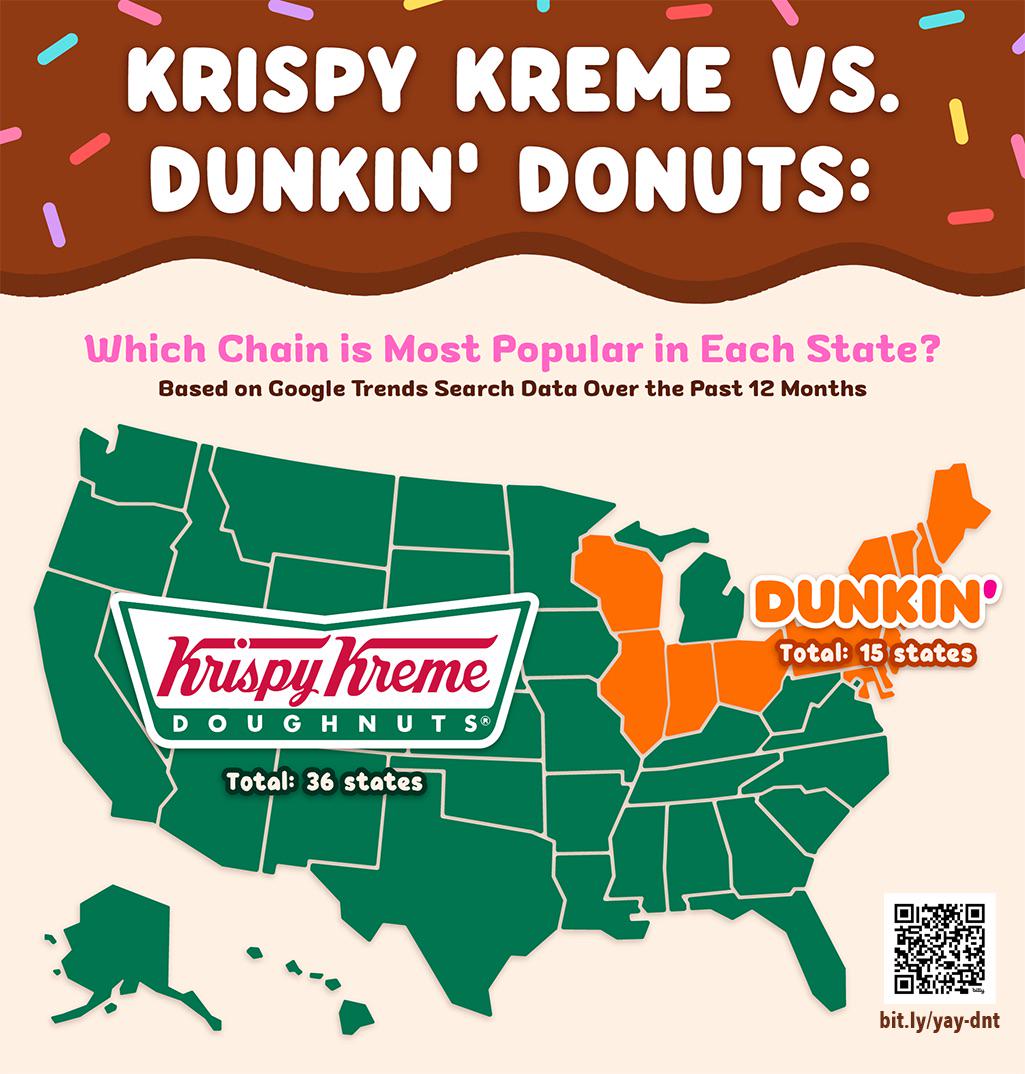Krispy Kreme vs Dunkin' Donuts Store Location Map


Marcus Rodriguez
Historical Geography Expert
Marcus Rodriguez specializes in historical cartography and geographic data analysis. With a background in both history and geography, he brings unique...
Geographic Analysis
What This Map Shows
The "Krispy Kreme vs Dunkin' Donuts Store Location Map" provides a visual representation of the geographical distribution of Krispy Kreme and Dunkin' Donuts locations across the United States. This map highlights the density and spread of each brand's outlets, allowing viewers to see where these popular doughnut chains overlap and where they stand alone. By analyzing this map, we can gain insights into the competitive landscape of the doughnut market, regional preferences, and even cultural trends surrounding coffee and doughnut consumption in America.
Deep Dive into the Doughnut Market
The doughnut industry in the United States is a fascinating sector of the food service market. According to the National Restaurant Association, the doughnut shop category generates approximately $5 billion in annual revenue. Interestingly, Krispy Kreme and Dunkin' Donuts are two of the most prominent players, each with their unique histories and customer bases.
Krispy Kreme, founded in 1937, has become synonymous with its signature Original Glazed doughnut. The company has a distinctive business model that often includes open kitchens where customers can watch their doughnuts being made. This transparency not only builds trust but also enhances the customer experience, making it a sensory delight to witness the doughnuts being crafted.
On the other hand, Dunkin' Donuts, established in 1950, has positioned itself as a coffee-first brand, frequently emphasizing its beverage offerings. While doughnuts are still a cornerstone of its menu, Dunkin' has expanded significantly into coffee, breakfast sandwiches, and other beverages. This strategy has helped Dunkin' to capture a broader market, appealing to busy commuters looking for a quick caffeine fix.
What's fascinating is that these two brands serve different demographics and cultural niches. Krispy Kreme often attracts those seeking a treat or a special occasion item, while Dunkin' serves a more everyday market focused on convenience and speed. This distinction can influence their store placements and marketing strategies, which are clearly reflected in the geographical distribution seen on the map.
Regional Analysis
When examining the geographical distribution of Krispy Kreme and Dunkin' Donuts, notable trends emerge. For instance, Dunkin' Donuts dominates in the Northeast and Mid-Atlantic regions, where its stores are more densely clustered. A significant factor for this could be the brand's strong history and marketing presence in these areas, where coffee culture thrives.
Conversely, Krispy Kreme has a more scattered yet concentrated presence, particularly in the Southern states. Cities like Atlanta and Charlotte feature multiple locations, highlighting the brand's Southern roots and appeal. Interestingly, states like California show a mix of both brands, albeit with a stronger Dunkin' presence, which may suggest a trend towards coffee-centric consumption in urban environments.
In regions where both brands are in proximity, such as parts of Florida and Texas, the competition appears to be fierce. This can lead to varied customer preferences, with some areas showing a clear preference for one brand over the other. For example, in Orlando, the map shows a higher density of Dunkin' stores, potentially reflecting local consumer habits that favor quick service and coffee over specialty doughnuts.
Significance and Impact
Understanding the geographical distribution of Krispy Kreme and Dunkin' Donuts is significant for several reasons. First, it sheds light on consumer behavior and regional preferences, which are crucial for marketers and business strategists. As coffee and doughnut consumption trends evolve, brands can adapt their strategies to meet changing demands.
Moreover, the competitive landscape illustrated by this map can inform future expansions and store openings. For instance, if a new Dunkin' Donuts location emerges in an area with high foot traffic near existing Krispy Kreme stores, the dynamics of customer choice and brand loyalty could shift dramatically.
Looking forward, the rise of health-conscious eating and the increasing popularity of specialty coffee could impact both brands. Krispy Kreme may need to diversify its offerings to include healthier options, while Dunkin' might explore ways to enhance its doughnut menu to retain its customer base. As we analyze these trends, it's clear that the doughnut market remains a dynamic and evolving landscape, influenced by consumer preferences, regional trends, and competitive strategies.
Visualization Details
- Published
- October 24, 2025
- Views
- 32
Comments
Loading comments...